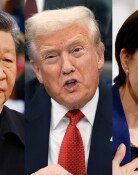Newly developed ‘needle patch’ to reduce pains inflicted by needles
Newly developed ‘needle patch’ to reduce pains inflicted by needles
Posted August. 25, 2018 08:00,
Updated August. 25, 2018 08:00

Yoon Seok-min, CEO of ADMBioscience, a company established last month at the Korea Institute of Machinery & Materials, kept pressing the “needle patch” put on his arm in order to reassure the reporter, who used the patch for the first time that it is safe to use.
A needle patch is a tool that can administer medication into the body instead of a needle. It can be put on the skin like a Band-Aid. The institute developed the world’s first microneedle-based patch using natural DNA proteins, and ADMBioscience was established to commercialize the needle patch. The company can produce more than 2.4 million patches a year.
The bottom of the patch was an array of fine protrusions looked almost like fine hairs. They were not as hard as needles since they are made of soluble DNA proteins. When the patch is applied to the skin, the fine protrusions dissolve and the medications is delivered inside the body. “It is expected to greatly reduce the pains of infants and those who need to have a shot regularly,” said Yoon.
“The fine protrusions are short in length and dissolve within a few minutes, causing no pain or bleeding,” said chief researcher Jeong Joon-ho, who invented the needle patch. The fine protrusions of pharmaceutical needle patches are 650∼900μm in length and those of cosmetic needle patches are 300μm.
So far, no needle patches have received sales approval both at home and abroad. Needle patches currently on the market are all for cosmetic purposes. A microneedle patch for flu vaccination developed by the Georgia Institute of Technology is the only patch that has made it to a phase 2 clinical trial but it is unlikely to be commercialized as it is made of polyvinyl pyrrolidone (PVP). The PVP, which is included in hair sprays and hair dyes, can cause allergy reaction if contacted with blood or body fluid.
kyungeun@donga.com







